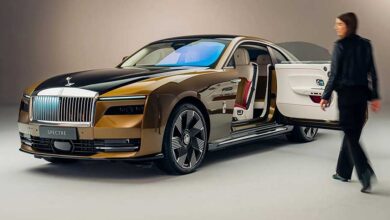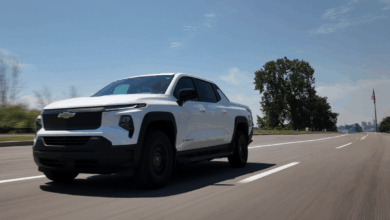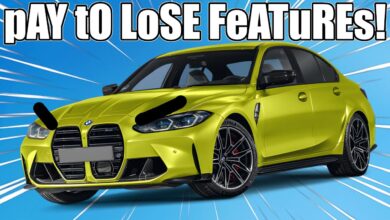Why Vehicle Leasing Is Now Smarter


For decades, the conventional wisdom of personal finance has been clear: buying a car is the smarter, more equity-building choice, while leasing is often dismissed as “throwing money away” on a long-term rental. This advice, while once sound, is dangerously outdated. In today’s rapidly evolving automotive landscape—characterized by blistering technological advancement, economic volatility, and shifting consumer priorities—the calculus has fundamentally changed. Leasing has emerged as a strategically astute financial tool for a growing number of consumers. This comprehensive guide will dismantle the old myths and illuminate the powerful, modern arguments for why leasing a vehicle can be a smarter, more pragmatic, and financially sound decision than purchasing.
A. The Paradigm Shift: Modern Realities Favoring Leases
The automotive world of 2024 is vastly different from that of 2004 or even 2014. Several seismic shifts have converged to make leasing a more attractive proposition.
A. The Blistering Pace of Technological Obsolescence
The core of a vehicle’s value is no longer just its engine and transmission; it’s its software, battery, and driver-assistance technology. The update cycle for in-car tech now mirrors that of smartphones.
-
Hardware Evolution: An electric vehicle (EV) purchased today may have a battery with 300 miles of range. In three years, a new model could offer 450 miles for the same price. The depreciation on the older model will be catastrophic.
-
Software Supremacy: Features like self-driving capabilities, infotainment systems, and performance upgrades are increasingly delivered via software. A leased vehicle allows you to upgrade to the latest software-defined car every few years, avoiding being stuck with a technologically stagnant asset.
B. Unpredictable Depreciation and Economic Uncertainty
Depreciation is the single largest cost of car ownership. In the current climate, it has become highly unpredictable.
-
EV Market Volatility: As battery technology improves and new models flood the market, the resale value of current-generation EVs is a major unknown. Leasing transfers this depreciation risk entirely from you to the leasing company.
-
The Post-Pandemic Hangover: The used car market is normalizing after historic highs. Predicting a vehicle’s value three to five years from now is fraught with uncertainty. A lease with a locked-in residual value acts as a financial hedge against a potential market correction.
C. The Proliferation of Complex and Costly Repairs
Modern vehicles are more reliable in some ways but astronomically more expensive to repair when things go wrong.
-
ADAS Calibration: A minor fender-bender now requires recalibration of cameras, radar, and sensors, often costing thousands of dollars.
-
EV-Specific Issues: While EVs have fewer moving parts, an out-of-warranty battery replacement can cost $15,000-$25,000—a financial catastrophe for an owner.
A lease typically covers the entire duration of the manufacturer’s comprehensive bumper-to-bumper warranty. You drive under a blanket of financial protection, immune to major repair bills.
B. The Tangible Financial Benefits of Leasing
Beyond mitigating risk, leasing offers concrete financial advantages that are often overlooked in the traditional “buy vs. lease” debate.
A. Consistently Lower Monthly Payments
When you purchase a car with a loan, your monthly payment is calculated to pay off the entire purchase price of the vehicle, plus interest, over the loan term. When you lease, your payment is only covering the vehicle’s depreciation during the lease term, plus interest (called a “money factor”) and fees. This fundamental difference means that for the same vehicle, with the same loan/lease term and credit score, the monthly lease payment will almost always be significantly lower. This frees up cash flow for other investments, savings, or expenses.
B. Minimal Upfront Capital Outlay
A lease often requires a much smaller initial out-of-pocket payment than a purchase. While a car loan might demand a 10-20% down payment to secure a reasonable monthly payment, a lease can frequently be initiated with only the first month’s payment, a security deposit, and acquisition fees. This allows you to keep your savings invested elsewhere, where they can potentially earn a higher return than the interest rate you’d save by making a large down payment on a depreciating asset.
C. The Sales Tax Advantage (In Many States)
In numerous states across the U.S., you do not pay sales tax on the full value of a leased vehicle. Instead, you only pay sales tax on each monthly payment. For example, if you lease a $50,000 car, you are not paying a lump sum of sales tax on $50,000 upfront. This provides a substantial upfront savings and spreads the tax burden over the life of the lease.
D. Eliminating the Hassle of Selling a Depreciating Asset
At the end of a loan term, you own a used car. Selling a private-party vehicle involves advertising, negotiating with strangers, handling paperwork, and navigating the risks of test drives. It’s a time-consuming and often stressful process. At the end of a lease, you simply return the car to the dealership (assuming you’ve stayed within the mileage limits and maintained the vehicle properly). It’s a clean, hassle-free exit.
C. The Lifestyle and Practicality Advantages
Leasing aligns perfectly with the needs and desires of modern consumers who prioritize flexibility, convenience, and experience.
A. Guaranteed Access to Newer, Safer Technology
A standard 36-month lease cycle ensures you are always driving a relatively new vehicle. This means you consistently benefit from the latest advancements in:
-
Safety: Newer models have more advanced airbag systems, crumple zones, and standard Advanced Driver-Assistance Systems (ADAS) like automatic emergency braking and blind-spot monitoring.
-
Connectivity: You’ll always have the latest infotainment systems, smartphone integration, and built-in connectivity features.
-
Fuel Efficiency: You can upgrade to more efficient powertrains as they become available, whether it’s a more refined hybrid or a next-generation EV.
B. Perfect for Evolving Life Circumstances
Life is unpredictable. A two-door coupe might be perfect for a single professional but wholly inadequate when a family comes along. Leasing provides the flexibility to right-size your vehicle for your current life stage every few years without the long-term commitment of ownership. It allows you to easily adapt to a new job with a longer commute, a growing family, or a new hobby that requires towing or hauling capacity.
C. Simplified and Predictable Budgeting
A lease transforms a significant variable cost—vehicle transportation—into a fixed, predictable monthly expense. You know exactly what your car payment will be for the next two or three years. When combined with a factory warranty that covers all major repairs, you are largely insulated from unexpected automotive financial shocks, making personal budgeting far more straightforward.
D. A Strategic Guide to Smart Leasing
To make leasing “smarter,” you must be an informed and strategic consumer. Avoid common pitfalls by following this blueprint.
A. Master the Three Key Leasing Variables
Negotiating a lease is different from negotiating a purchase. Focus on these three numbers:
-
Capitalized Cost (“Cap Cost”): This is the negotiated selling price of the vehicle. You should negotiate this just as aggressively as you would if you were buying the car.
-
Residual Value: This is the leasing company’s estimate of what the car will be worth at the end of the lease. It is a percentage of the MSRP. A higher residual value translates to lower monthly payments. This is generally non-negotiable but is crucial to compare across different models.
-
Money Factor: This is the interest rate on the lease. It is often presented as a small decimal (e.g., 0.00125). To make it understandable, multiply it by 2,400. (0.00125 x 2400 = 3%). A lower money factor means less interest cost.
B. The Mileage and Wear-and-Tear Imperative
The two most common sources of end-of-lease fees are excess mileage and excess wear and tear.
-
Be Realistic About Mileage: Choose a mileage allowance (e.g., 10,000, 12,000, 15,000 miles per year) that you will not exceed. The per-mile penalty (often $0.25-$0.30) can add up to thousands of dollars.
-
Understand “Normal Wear and Tear”: Familiarize yourself with the leasing company’s guidelines. Large dents, deep scratches, cracked glass, and significantly worn tires will incur charges. Minor scuffs and light stone chips are typically considered normal.
C. Know Your End-of-Lease Options
As your lease term concludes, you have three primary options:
-
Return the Vehicle: Walk away after paying any applicable fees.
-
Purchase the Vehicle: You have the option to buy the car for its predetermined residual value. Compare this price to the current market value of similar used vehicles to see if it’s a good deal.
-
Lease a New Vehicle: Often, the most seamless option is to transition directly into a new lease from the same manufacturer, sometimes with loyalty incentives.
Conclusion: Making the Smart Choice for Your Situation
The old dogma that buying is always better than leasing is a relic of a bygone automotive era. While buying and keeping a car for a decade is still a valid strategy for those who prioritize long-term cost minimization and don’t mind driving an older vehicle, it is no longer the undisputed “smart” choice. Leasing has evolved into a powerful financial strategy that offers lower payments, protection from depreciation and repair risk, and unparalleled flexibility to enjoy the latest technology. In a world of rapid change, the ability to adapt is priceless. For the modern driver, leasing isn’t just an alternative—it’s an intelligent, forward-thinking approach to personal transportation.
Tags: car leasing, lease vs buy, auto leasing, vehicle lease, car finance, leasing benefits, smart leasing, automotive trends, car payment, depreciation protection
Category: Automotive & Finance

:max_bytes(150000):strip_icc()/when-leasing-car-better-buying-v1-735d3e7993d0435c8e1dcc0831af07bc.png)
:max_bytes(150000):strip_icc()/should-i-lease-a-car-2385821_final-77bc5701d1754852924843b99da8e765.png)



